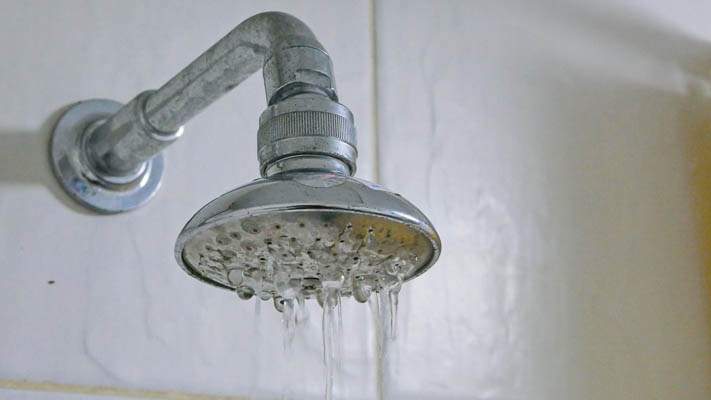What Is Low Water Pressure and How to Measure It?
Low water pressure occurs when the force of water flowing through your pipes is insufficient, resulting in weak or slow water flow from faucets, showers, or appliances.
Normal residential water pressure should range between 40 and 60 psi. Anything above 80 psi is too high, can damage appliances, and may increase the likelihood of pipe leaks. Anything below 30 psi is too low and can prevent some appliances from functioning properly.
It's easy to measure your water pressure with inexpensive pressure gauges, which are readily available at most hardware stores. These gauges can be attached to any of the following three common fixtures in your home:
- Outdoor hose spigots and hose bibs
- The supply connection to your washing machine
- The drain at the bottom of your hot water heater
Low Water "Pressure" vs. Low Water "Flow"
Many people refer to having low water pressure in their home when they really mean they have low water flow at one or more outlets, like a shower or sink.
You can actually have quite high pressure in your pipes, but if there is a restriction somewhere, you'll experience a reduction in flow when the water is running.
For this reason, when you check your water pressure, measure both your static pressure (with all outlets closed) and your dynamic pressure (with one or more outlets open and the water running). Ideally, you should also check multiple outlets around your home if possible.
Even if you have very obviously low water flow at a particular outlet, it can still be useful to test your static water pressure.
What Are the Common Causes of Low Water Pressure?
Throughout this article, we will discuss in detail the following terms:
- Systemic Low Water Pressure: A long-term issue affecting your entire home or specific areas.
- Temporary Low Water Pressure: A sudden or recent issue affecting one or more outlets in your home.
We will break down common symptoms and solutions for both these causes of low water pressure
How to Fix Low Water Pressure Caused by Systemic Issues
Below, we've listed some possible causes of persistent low water pressure and weak water flow in your home. We've also included their symptoms and potential fixes to help you identify the cause and find a solution more easily:
Old Galvanized Plumbing
Symptoms
Here at Repipe Specialists, replacing old galvanized pipes with new copper pipe or PEX tubing is one of the most common services we provide. We've upgraded thousands of homes, giving homeowners clean, fast-flowing fresh water.
We have an article dedicated to why is low water pressure caused by galvanized pipes. Some possible symptoms of galvanized pipes causing low water pressure include:
- Your home is 40+ years old
- Most or all water outlets have low flow
- Water may look rusty or taste metallic
- Low flow tends to be worse on hot water outlets
Solution
There is no way to repair old galvanized pipes—they need to be replaced. Doing the replacement in stages is more disruptive and expensive than replacing the entire system at once.
Having completed over 75,000 repipes, we've perfected our One Stop Repipe™ Process. We handle everything from permits to wall patching, and your repipe is completed in just 1-2 days.
We have a quick, five-minute read covering the cost of replacing galvanized plumbing. We also offer special no-interest, nothing-down financing programs to make repiping more affordable.
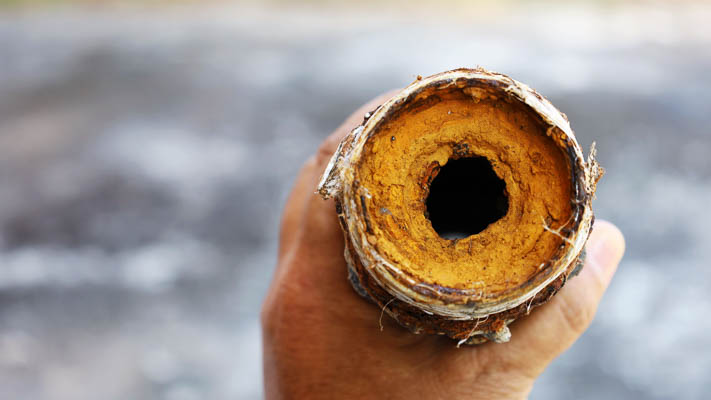
Mineral Buildup in Pipes and Outlets
Symptoms
Old galvanized iron pipes can accumulate significant rust internally, causing water flow restrictions.
However, any type of plumbing can build up mineral scale in pipes, fittings, and outlets, especially in hard water areas. Hard water is the build-up of calcium and magnesium mineral deposits in your home's water pipes.
This is particularly prevalent in plumbing systems with numerous connections and bends, such as CPVC or copper piping. Some symptoms include:
- You live in a hard water area, and your home is 20+ years old.
- Streaks and scale on fittings and sinks indicate hard water.
- Flow rates vary by fixture and area.
- Outside hose bibs with no filter screens may have high flow, but internal fixtures with filter screens are slow.
- Outlets that people use less may have worse flow than those that people use frequently.
Solutions
Start by ensuring that fixtures (such as faucets) are cleaned of sediment and scale, and that any filter screens are flushed out. You may need to replace older fixtures.
If that doesn't resolve the issue, and you have piping that's been in place for 20+ years in a hard water area, it's possible that the entire system needs to be repiped.
Many of our customers choose to repipe from copper to PEX tubing. PEX tubing comes with many benefits over other pipe types: in the context of mineral buildup and low pressure, a key benefit is that PEX tubing can be run in continuous lengths from a central manifold directly to outlets. This reduces the number of connections and tight bends, resulting in higher flow and less mineral buildup.
If you'd like to learn more about a PEX repipe, contact us a for a free repipe consultation and quote.
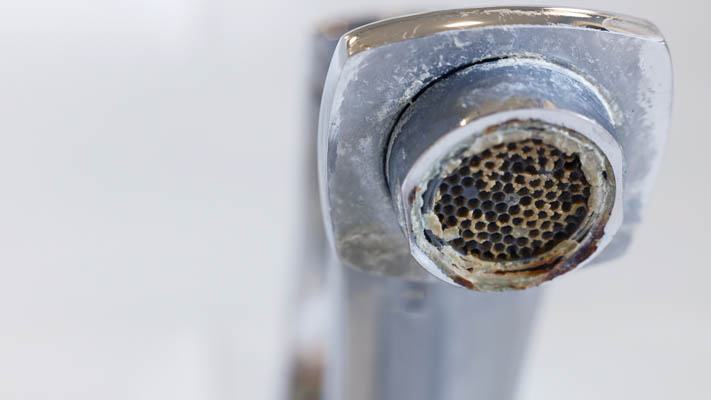
Restricted Flow in Main Supply to House
Symptoms
If there is restricted water flow between the water main in the street and the entry point into your home, it will affect both water flow and pressure equally throughout your house.
If your neighbors do not experience water pressure problems, it is unlikely that the issue is low pressure from the municipal supply.
Solutions
One possibility is that a shut-off valve in your water supply is partially closed. Most homes have a shut-off valve near where the water supply enters, and it's important to know its location in case you need to shut off the water quickly.
There are also usually shut-off valves on either side of the water meter. By visually inspecting these valves, you can typically determine if any are partially closed.
If all valves appear to be fully open, it's possible that you may need to replace your main line. Like the plumbing inside your home, rust or mineral buildup can block the main service line.
If you have extensively remodeled your home over the years, you may need a larger diameter for the service line to accommodate the higher water volume demand.
Improperly Sized Piping
Symptoms
The diameter of a pipe or tube determines its capacity to carry water at normal flow rates. If a pipe is undersized for the water demand it serves, it can result in low water flow at outlets. Building codes establish minimum pipe diameters based on expected demand, so it is unlikely that your home originally had undersized pipes.
However, if you remodeled or extended your home, the new construction may have used undersized pipes, or the added demand may have exceeded the capacity of certain parts of your plumbing system. Corrosion and scale buildup in old pipes can further exacerbate this issue.
Unless the main service line is undersized, you will most likely notice reduced flow in specific areas of your home, such as remodeled sections or areas farthest from the main line.
Solutions
A plumber will need to evaluate your plumbing system to determine if any sections are undersized. If they are, those sections will need to be replaced.
We'd be happy to help you troubleshoot your low water flow issues—contact us for a free consultation. Repipe Specialists is a fully licensed plumbing contractor in every state we operate in.
Systemically Low Pressure From Municipal Supply
Symptoms
- More common at higher elevations
- Your neighbors are likely to have the same issue
- Upper-floor fixtures may have much lower flow than those on the ground floor
Solution
A booster pump can increase water pressure throughout your home or in specific areas, such as upstairs. However, this is not always a simple, drop-in fix. Before installing a booster pump, you should first confirm that the low pressure is not due to a temporary issue with the main supply.
It's also possible that another low-pressure issue mentioned in this article is contributing to the problem. Addressing that first may restore sufficient flow without the need for a booster pump, which may also require a pressure storage tank.
We don't install booster pumps or systems, but we can help determine if a repipe could improve your water flow.
Faulty Water Pressure Regulator
Symptoms
In areas where the municipal water supply has very high pressure, homes are fitted with water pressure regulators, often referred to as pressure-reducing valves (PRVs), which lower the water pressure entering your home. These valves typically have a service life of 10 to 15 years.
A PRV-related pressure issue will affect all outlets in your home. Some PRV issues may also cause fluctuations in water pressure throughout your home.
Solutions
- The PRV pressure setting may be too low.
- Someone may have partially closed the shutoff valves near the PRV.
- You may need to replace your pressure-regulating valve.
At Repipe Specialists, we specialize in whole-home repipes and do not offer general plumbing services such as PRV replacement. However, we maintain a list of trusted local referrals in many areas. Feel free to contact us, and we'd be happy to provide a recommendation.
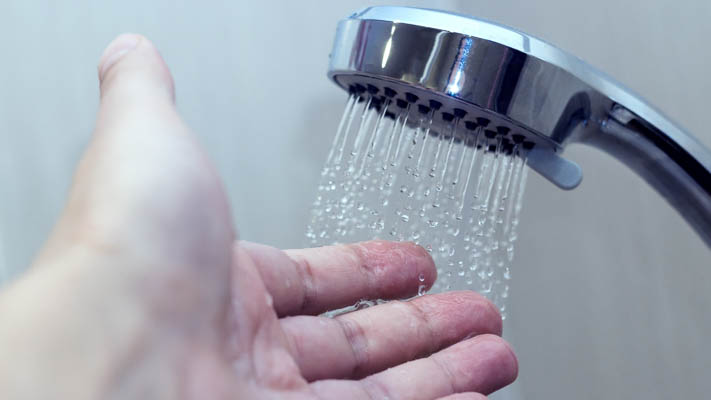
Hot Water Heater Tank Issues
Symptoms
- Low pressure on hot water outlets only
- All hot water outlets have low flow
Solutions
There are several reasons a tank-based water heater may be associated with low water pressure. It could be as simple as a partially closed supply valve or a kinked supply or outlet pipe—especially if your water heater uses flexible pipe connections.
Sediment buildup in the tank is another common cause. Manufacturers recommend flushing your water heater at least once a year, or more often in areas with hard water. This is a relatively easy DIY task, and there are many instructional videos available online.
Water heaters have a limited service life. If yours is more than 10 years old, it may have significant internal corrosion and likely needs replacement.
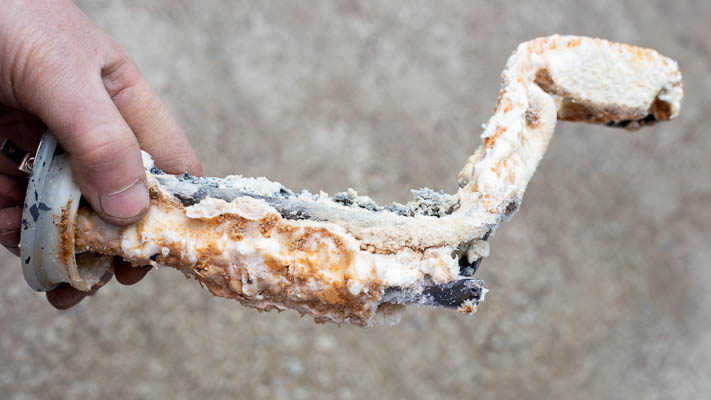
Well Water System Malfunctioning
If you have a well system, there are several possible reasons for low water pressure, depending on the type of system you use (gravity-fed vs. pressure tank).
We won't cover the many well-related issues here—it's best to have a well system specialist regularly service and inspect your system. However, we do have an article on ensuring high-quality well water in Oklahoma homes.
Get your free estimate today
With over 75,000 repipes completed, we've perfected our One-Stop Repipe™ for your home.
How to Fix Low Water Pressure Caused by Temporary Issues
Here are some common temporary (also know as localized) causes of low water pressure and their possible fixes:
- Water Leak in Pipes or Slab: If a leak causes a noticeable pressure drop but isn't visible, it may be under your slab foundation. This can cause serious damage, so you should address it immediately. Shut off all outlets and check your water meter for ongoing usage. Learn more in our guide on The Best Options for Slab Leak Repairs
- A Fully or Partially Closed Valve: A sudden drop in pressure could mean a valve was accidentally closed. If the issue affects your whole house, check the water meter and main shut-off valve. If only hot water is affected, inspect the valves near your water heater. Individual fixtures also have their own shut-off valves.
- Water Main Outage: Check your local municipality's website for updates on water main breaks or maintenance work that may be disrupting your supply.
- Faulty Pressure Regulator: Regulators can fail suddenly, often causing high pressure, but sometimes a sudden drop in flow. If yours is over 10 years old (or less in hard water areas), consider replacing it.
- Temporary Clogging of Pipes From Silt: Recent work on local water mains can introduce silt into your pipes, restricting flow. Check a fixture like a showerhead—if you see sand or debris behind the screen filter, clean it and flush your system.
How Much Does It Cost To Repipe a House?
Most of our repipes range from $4,500 for a two-bedroom, one-bath house to $15,000 for a larger, more complex job.
Copper repipes cost more than PEX tubing. We use only American-made Type-L copper pipe or Uponor PEX-A tubing for all of our full home repipes, both backed by a lifetime warranty.
PEX tubing is our most common repipe material, and is particularly popular if homeowners are looking to resolve low water pressure issues. For a detailed breakdown of repipe cost factors, check out our article: How Much Does It Cost to Repipe a House.
Contact us, and one of our friendly repipe consultants can walk you through your options in person or via a remote consultation.
Get a Quote for Your Full Home Repipe
At Repipe Specialists, we have replaced the plumbing in over 75,000 homes since 1991. We work across the United States using copper piping and PEX tubing. We continually get positive customer feedback from customers about their overall home repipe experiences. We often exceed their expectations on:
- Speed: Our repipe crews typically complete a repipe in a day, returning on another day for wall patching.
- Convenience: Through our One-Stop Repipe™ Process, We manage everything from permits to wall patching, and we complete your repipe in just 1-2 days.
- Cleanliness: Our crews protect your home while working by covering all surfaces with protective sheeting, and they fully clean up at the end of each day.
- Peace of Mind: Repipe Specialists is a fully licensed plumber in every state we operate in, and we back all of our repipes with a lifetime warranty.
- Financing programs: To help take the sting out of unplanned repipe expenses, we offer several financing programs.
- Price: As a specialist that performs hundreds of repipes a week, we can deliver high-quality repipes at a lower cost vs generalist plumbers. We have an article that covers repipe cost factors in detail.
Schedule a free in-home consult, and one of our local repipe consultants will explain all your repipe options and provide you with a written, fixed-price quote. Permanently fix low water pressure issues, repipe now.

